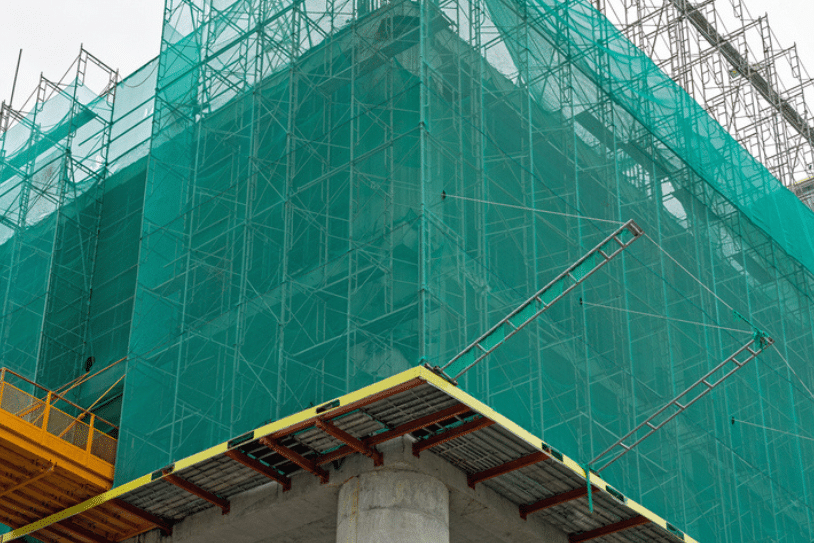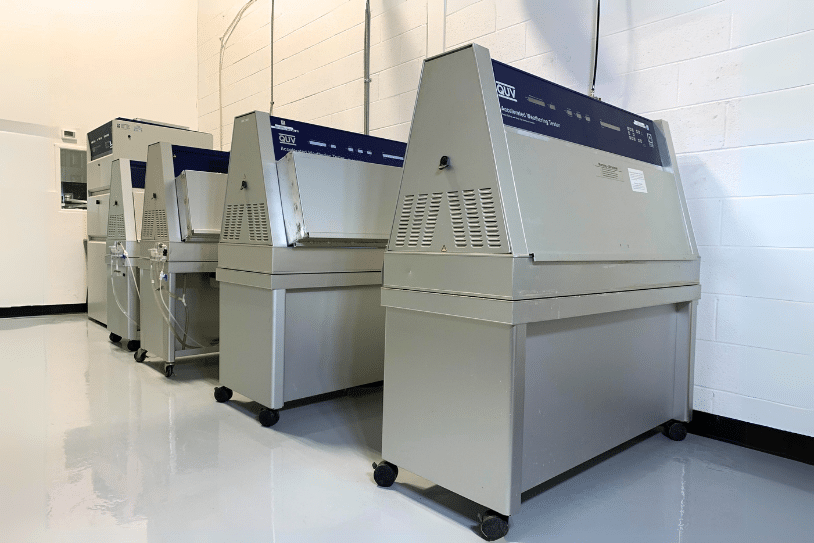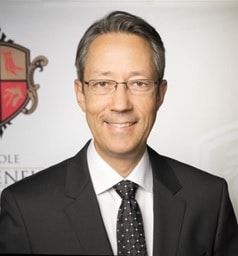
Case Study: Accelerated Aging Of Construction Safety Nets
Safety nets are omnipresent across various environments, ranging from amusement parks and baseball fields to construction sites. They serve a critical function: ensuring the safety of end users, whether they are spectators, climbers, or workers at risk of falling.
The Importance of Safety Nets
In 2021, the Bureau of Labor Statistics in the United States reported a total of 5,190 worker fatalities. Of these fatal injuries, a significant 20% occurred on construction sites. Among the 1,038 construction-related fatalities, 37% were attributed to falls. This translates to 385 deaths that could potentially have been prevented with the use of effective safety nets.
The Problem
Falls on construction sites in the US are the leading cause of mortality and represent the top concern among the “fatal four” causes identified by the Occupational Safety and Health Administration (OSHA). The “fatal four” are responsible for more than half of all construction worker deaths, underscoring the critical importance of mitigating fall-related risks through appropriate safety measures.
The Approach
When considering the use of safety nets, various parameters must be evaluated. From a testing standpoint, crucial factors include tear resistance, tensile strength, and other mechanical properties. However, it is also essential to consider the effects of aging and the potential loss of mechanical resistance over time. In light of these considerations, our experts were contacted by a European standards writing body to develop a robust testing protocol.

The Testing Protocol
The standards body aimed to specify an accelerated UV aging test protocol using a xenon arc light source (ISO 4892-2) with a combination of quartz and borosilicate filters. Typically, this light source is a 6500-watt burner encased by two glass tubes sealed at both ends, through which cooling demineralized water is circulated. These glass tubes act as filters, composed of various chemical materials, with the most common ones being:
- Quartz
- Borosilicate
- Soda lime
These filters control the emission spectrum to which the samples are exposed.
Quartz, being largely transparent and minimally filtering, is rarely used due to its inadequacy for a reliable aging test. Shorter UV wavelengths, which are high in energy and detrimental to synthetic materials, are naturally filtered by the Earth’s atmosphere and its ozone layer. Thus, a quartz filter would not provide a valid testing scenario.
Soda lime, the same type of glass used in standard window panes, filters a significant portion of UV rays. This explains why one cannot get a sunburn through a glass window, although some UV rays do pass through, causing materials like curtains to yellow over time. Soda lime filters in xenon arc testers simulate indoor sun aging.
For outdoor simulation, a borosilicate-borosilicate filter combination is typically used. While suitable for simulating outdoor sun exposure, this combination filters too much of the lower UV spectrum, making it effective for accelerated aging of color changes and aesthetic properties like gloss retention but not for assessing the loss of mechanical properties, which is paramount for safety nets.
Our Recommendation
After thorough analysis, our experts recommended the use of a fluorescent UV light source instead of a xenon lamp arc source. Specifically, we suggested exposing different safety nets according to ISO 4892-3. For development purposes, we proposed aging various nets with incremental exposure times and conducting tensile tests every 1,000 hours of exposure. This approach would establish a market benchmark and determine the minimum required exposure duration. While ASTM G154 could also have been recommended, European standards bodies typically prefer citing European standards over US standards, which is understandable.
By adopting these recommendations, the standards body can ensure that safety nets are rigorously tested for durability and reliability, ultimately enhancing safety for all users in various environments. From what we could find, in North America, there are no accelerated aging tests for safety nets, only a 400 lb drop test, and the requirement that safety nets be visually inspected annually.
Micom Laboratories is a specialized Canadian testing laboratory with over 25 years of experience in material testing and accelerated aging testing, including UV tests, corrosion tests, coatings and polymer tests and more. Please do not hesitate to contact us if you have any questions about our testing services or to find out how to test your product to increase its safety, reliability and longevity.


